In today's rapidly evolving pharmaceutical landscape, ensuring drug regulatory compliance is more crucial than ever. Companies must navigate a complex web of regulations to guarantee that their products are safe, effective, and in line with legal standards. This commitment not only protects public health but also fosters trust between businesses and their consumers. Curious about how to effectively implement compliance assurance in your organization? Read on!
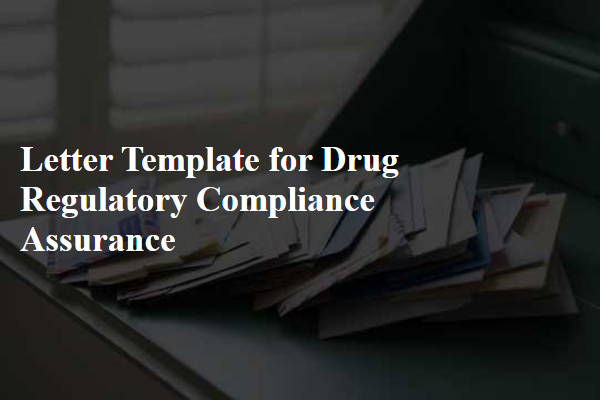
Regulatory guidelines adherence
Regulatory compliance assurance in pharmaceuticals is crucial for maintaining safety and efficacy standards mandated by authorities like the U.S. Food and Drug Administration (FDA) and the European Medicines Agency (EMA). Pharmaceutical companies must follow Good Manufacturing Practices (GMP) to ensure product quality and reduce the risk of contamination. Key documents include New Drug Applications (NDAs) that provide comprehensive data on drug trials and clinical efficacy. Regular audits and inspections conducted by regulatory bodies assess adherence to these guidelines, impacting product approval and market access. Non-compliance can result in warnings, fines, or product recalls, significantly affecting public health and the company's reputation.
Product safety and efficacy documentation
Product safety and efficacy documentation is crucial for regulatory compliance in the pharmaceutical industry. This documentation includes comprehensive data on clinical trials, such as Phase I, II, and III study results, ensuring that the drug's safety and effectiveness are thoroughly evaluated. The documentation also incorporates information on active pharmaceutical ingredients (APIs), their sourcing, and quality assurance measures, often adhering to guidelines set by the Food and Drug Administration (FDA) in the United States or the European Medicines Agency (EMA) in Europe. Additionally, risk assessment reports highlight any adverse effects observed during testing phases, providing a balanced view of the drug's therapeutic benefits versus potential risks. Regulatory submission packages must align with the International Conference on Harmonisation (ICH) guidelines, presenting all findings in a clear, structured format. Proper documentation not only facilitates approval processes but also builds trust in the healthcare community and supports patient safety initiatives.
Compliance monitoring practices
Compliance monitoring practices in the pharmaceutical industry are essential for ensuring adherence to regulations set forth by agencies like the U.S. Food and Drug Administration (FDA) and the European Medicines Agency (EMA). These practices often involve routine inspections of manufacturing facilities, such as those in New Jersey or Munich, where compliance with Good Manufacturing Practices (GMP) is rigorously assessed. Key performance indicators (KPIs) track essential processes, including batch record reviews and deviations from standard operating procedures (SOPs), often measured on a quarterly basis. Training programs for employees focus on the importance of regulatory compliance, which reduces the risk of penalties exceeding $1 million for non-compliance. The monitoring framework also encompasses pharmacovigilance systems that ensure continuous evaluation of drug safety throughout the product lifecycle, collecting adverse event reports and conducting risk assessments as necessary. Regular audits by internal and external parties enhance transparency and accountability within the organization, fostering a culture of compliance critical for maintaining market authorization and public trust.
Record-keeping and reporting procedures
Effective record-keeping and reporting procedures are essential for drug regulatory compliance in the pharmaceutical industry. Accurate documentation (key to the integrity of medical product information) includes batch production records, clinical trial data, and adverse event reports. Regular audits (conducted at least annually) must verify the accuracy of records against FDA requirements, ensuring traceability and accountability. Procedures for reporting significant findings (such as unexpected drug interactions or manufacturing discrepancies) must adhere to timelines established by the Drug Enforcement Administration (DEA) and the Food and Drug Administration (FDA). Training programs for staff (requiring certification every two years) enhance awareness of compliance protocols, fostering a culture of responsibility and adherence to regulatory standards within the organization.
Risk management strategies
Risk management strategies in pharmaceutical regulatory compliance focus on ensuring drug safety and efficacy throughout the product lifecycle. Regulatory agencies such as the FDA (Food and Drug Administration) utilize guidelines (such as ICH E2E) for risk assessment and management in clinical trials. The implementation of pharmacovigilance (the science related to the detection, assessment, understanding, and prevention of adverse effects) is critical for monitoring post-marketing safety. Additionally, risk communication serves as an essential element, supplying healthcare professionals and consumers with necessary information related to potential risks associated with medications. Employing risk mitigation techniques such as Risk Evaluation and Mitigation Strategies (REMS) ensures that the benefits of a drug outweigh its risks. Continuous training of staff on compliance norms, adherence to quality standards (GxP: Good practice guidelines), and regular audits can fortify a pharmaceutical company's commitment to maintaining regulatory compliance while safeguarding public health.
Letter Template For Drug Regulatory Compliance Assurance Samples
Letter template of compliance assurance for pharmaceutical product registration

Letter template of regulatory audit confirmation for drug manufacturing facilities

Letter template of compliance declaration for marketing authorization applications
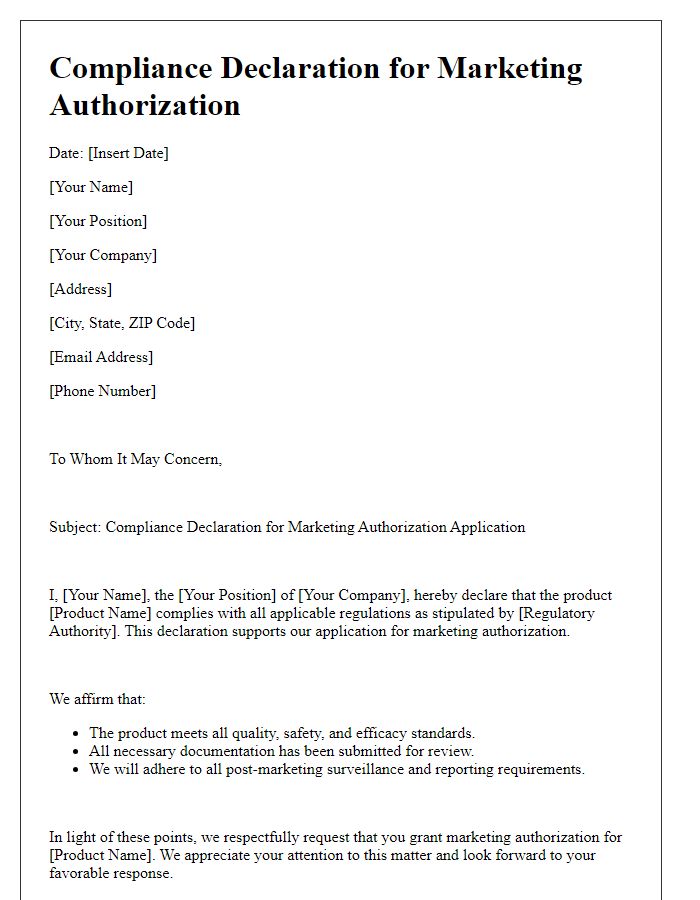
Letter template of accountability assurance for post-market surveillance
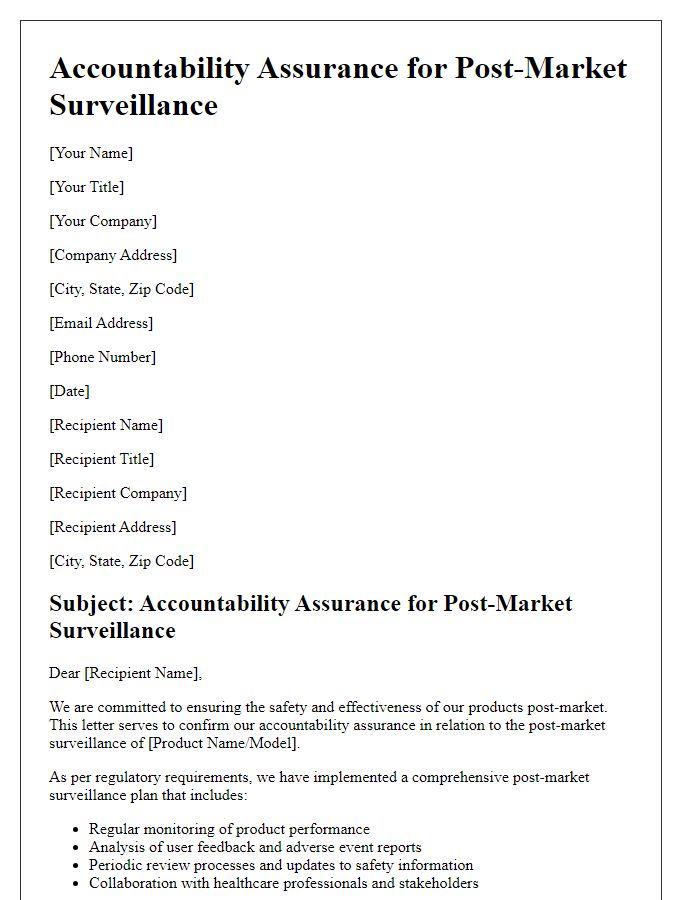
Letter template of regulatory adherence statement for biopharmaceuticals
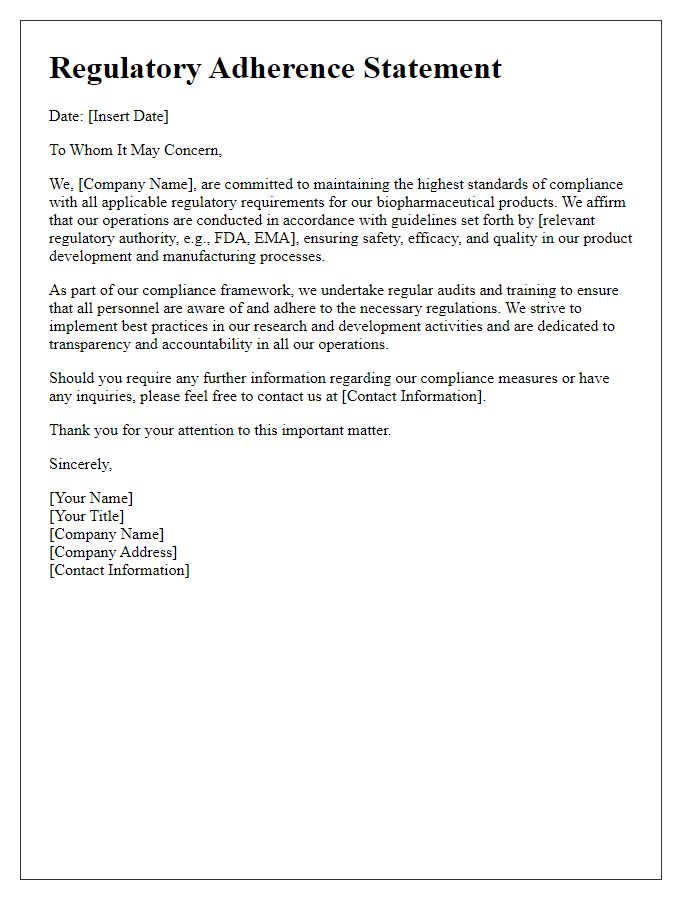
Letter template of compliance notification for good manufacturing practices
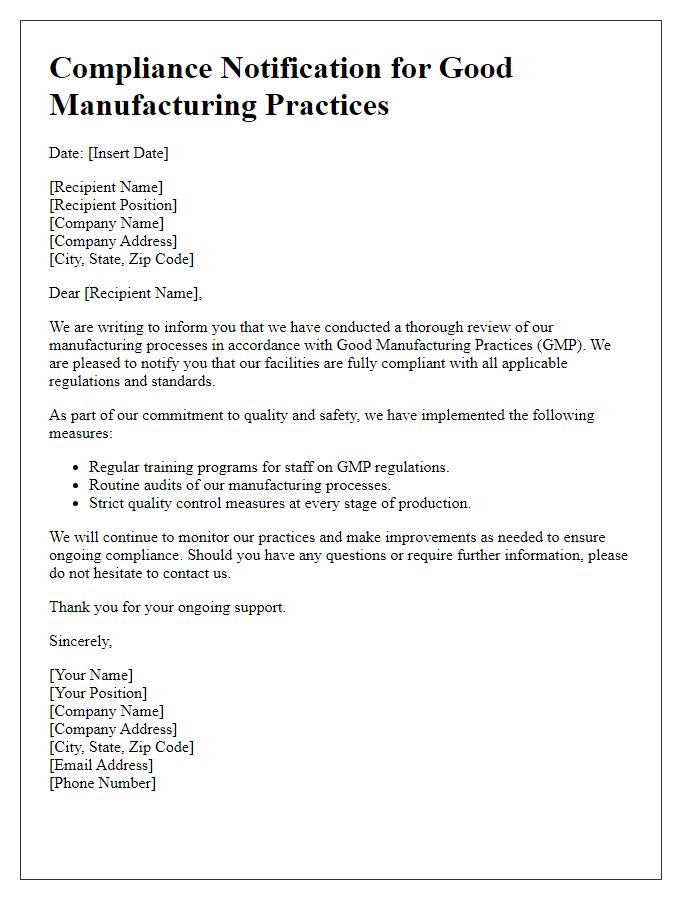

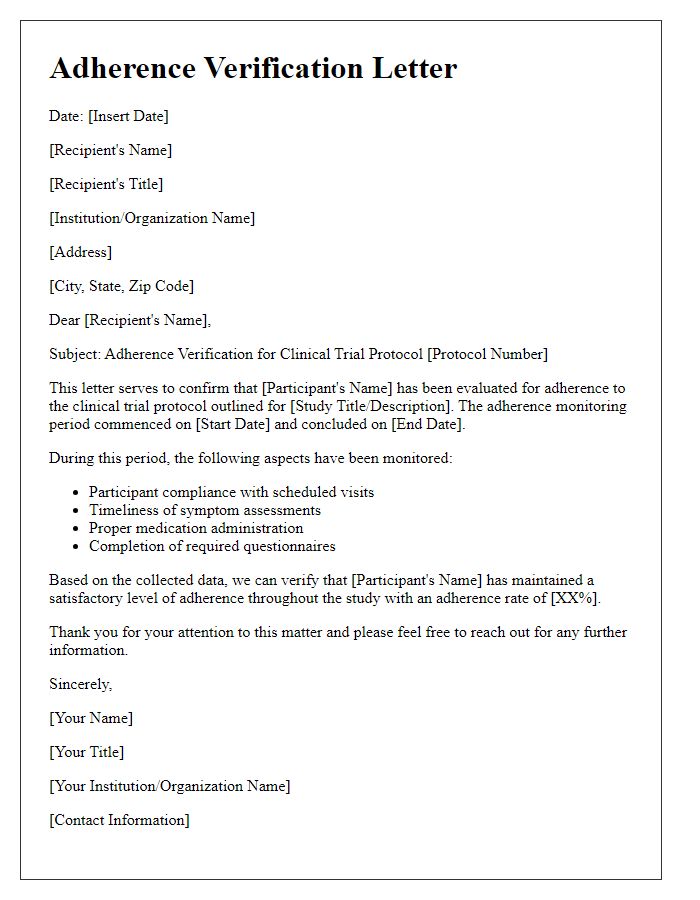
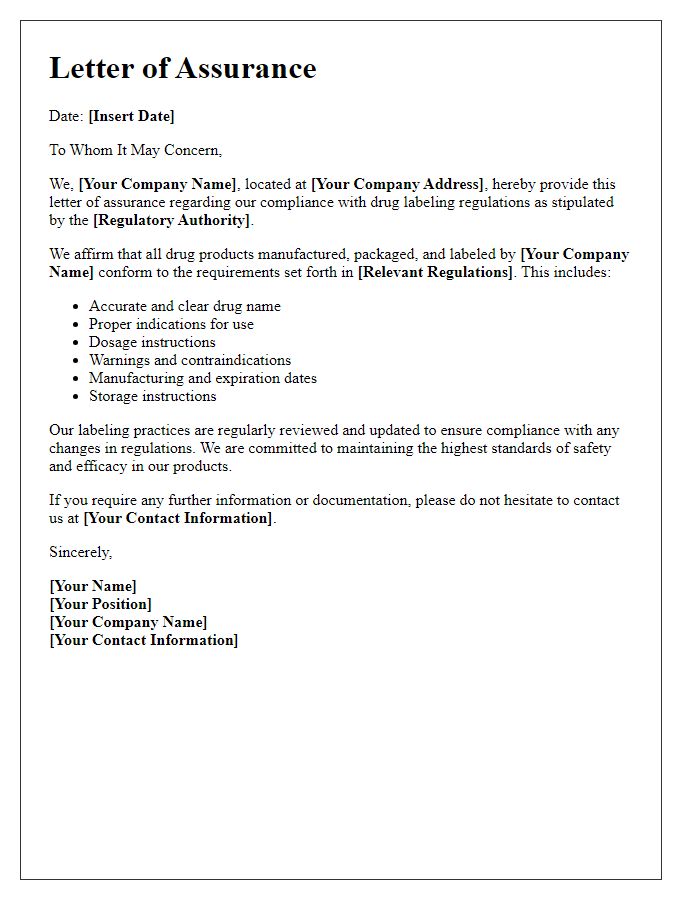
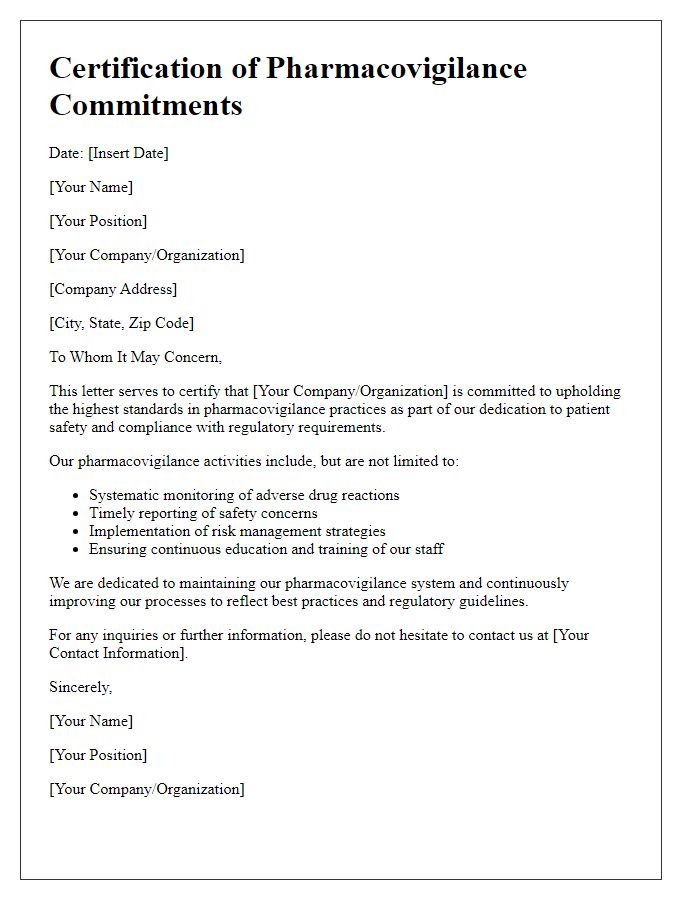
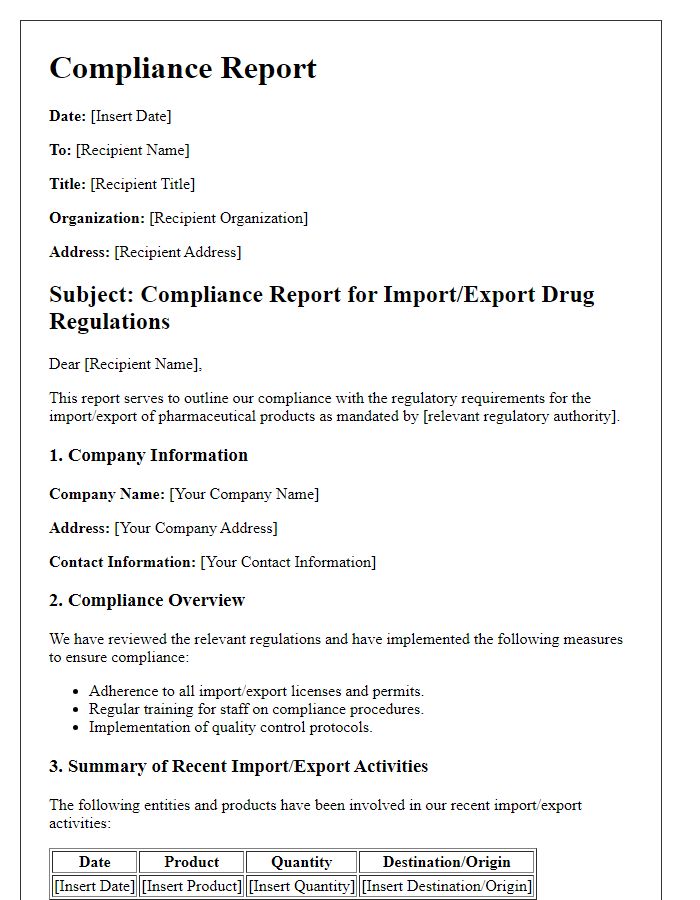

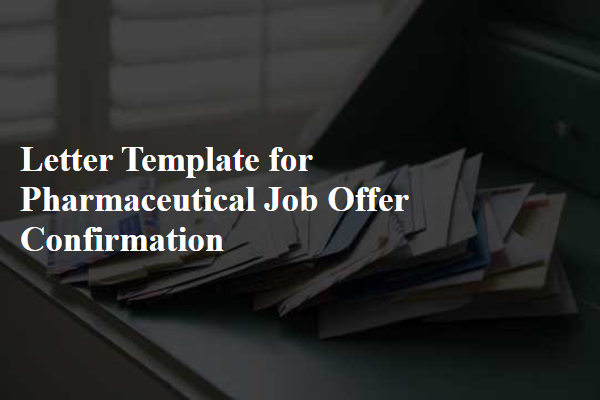
Comments